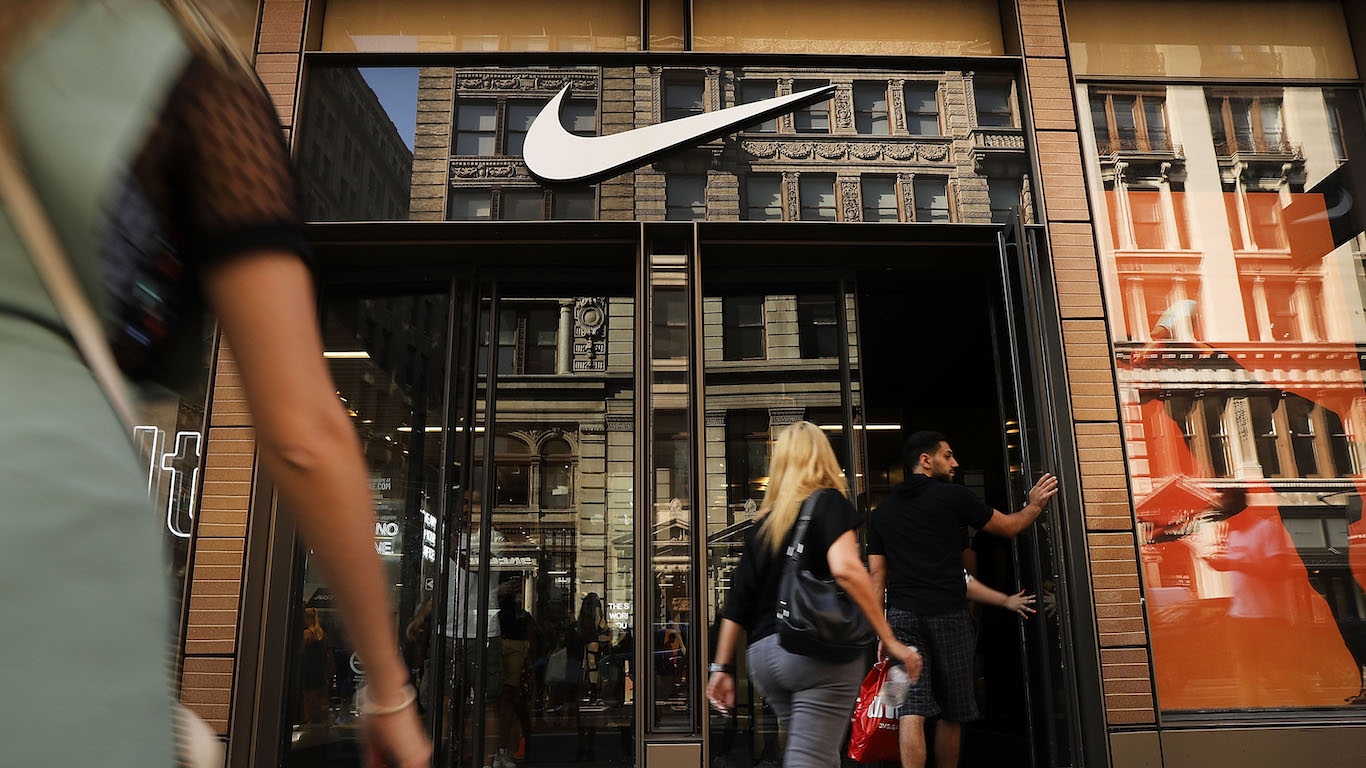
Now that three of the five largest U.S. traded companies have reported June-quarter earnings, we are looking forward to the remaining two. One of those, Facebook, along with Ford, PayPal and Qualcomm, report quarterly results after markets close Wednesday.
Before markets open on Thursday, we will hear from AstraZeneca, Comcast and Merck. Then after markets close Thursday, Amazon, First Solar and T-Mobile will disclose their quarterly results.
Looking ahead to Friday morning, we shall hear from a bellwether industrial firm and the country’s two largest integrated oil and gas companies.
Caterpillar
Heavy machinery maker Caterpillar Inc. (NYSE: CAT) had added more than 75% to its share price in early June, but as of Tuesday’s closing bell, the shares were up about 55% for the past 12 months. There was no specific reason for the sell-off, so it is possible that some investors just figured the stock had risen too much, too fast. The company had better have something spectacular in its earnings report for the second quarter.
Of 27 surveyed analysts covering the stock, most (14) rate the stock a Hold, with 10 others rating the shares a Buy or Strong Buy. At a recent price of around $211.50, the implied upside on the stock at a median price target of $245 is about 15.9%. At the high price target of $303, upside potential is around 43%.
For the company’s second quarter, analysts forecast revenue of $12.53 billion, an increase of 5.4% sequentially and about 25% year over year. Adjusted earnings per share (EPS) are expected to come in at $2.41, down by about 16% sequentially but by nearly 134% higher year over year. For the full fiscal year, the current revenue estimate is $48.94 billion, up more than 17%, and the EPS estimate is $9.93, which would be an increase of more than 51%.
Caterpillar stock trades at a multiple of 21.3 times expected 2021 EPS, 17.4 times estimated 2022 earnings and 15.0 times estimated 2023 earnings. The stock’s 52-week range is $130.21 to $246.69. Caterpillar pays an annual dividend of $4.44 (yield of 2.1%).
Chevron
Dow Jones industrial average component Chevron Corp. (NYSE: CVX) has posted a share price gain of more than 17% over the past 12 months. That is the result of a gain of 23% since the beginning of the year and the concomitant rise in the price of oil, which has increased by nearly 50% so far in 2021. The industry is being turned upside down as more alternative energy vehicles join the global auto fleet. There is still a lot of life left in Chevron and its peer and rival Exxon, but that life extends only to its dividend payments and share buybacks.
Of 28 analysts covering the stock, a dozen rate the stock a Hold, with 16 others rating the shares a Buy or Strong Buy. At a price of around $101.10, the implied upside on the stock at a median price target of $123 is about 21.7%. At the high price target of $149, upside potential is around 47%.
For the company’s second quarter, analysts anticipate revenue of $35.98 billion, an increase of 12.3% sequentially and about 167% year over year. Adjusted EPS are expected to come in at $1.60, up by about 77% sequentially and up from a loss per share of $1.59 year over year. For the full fiscal year, the current revenue estimate is $148.89 billion, up more than 57%, and the EPS estimate is $6.26, compared to a loss per share of $0.20 last year.
Chevron stock trades at 16.1 times expected 2021 EPS, 14.0 times estimated 2022 earnings and 14.0 times estimated 2023 earnings. The stock’s 52-week range is $65.16 to $113.11. Chevron pays an annual dividend of $5.36 (yield of 5.31%).
Exxon Mobil
The other U.S.-based oil and gas giant is Exxon Mobil Corp. (NYSE: XOM). Over the past 12 months, the company’s stock is up about 42%, including a 45% jump since the beginning of the year. The comments on Chevron apply about equally to Exxon. The company continues to explore for and discover more reserves offshore of Guyana. It is the rich dividend that keeps investors happy, though.
Of 28 analysts covering the stock, 18 rate the stock a Hold and nine others rating it at Buy or Strong Buy. At a price of around $58.20, the implied upside on the stock at a median price target of $67.50 is about 16%. At the high price target of $90, upside potential is around 55%.
For the company’s second quarter, analysts expect revenue of $63.96 billion, an increase of 8.4% sequentially and about 96% year over year. Adjusted EPS is expected to come in at $0.98, which would be up by about 52% sequentially and compares with a loss per share of $0.70 a year ago. For the full year, the current revenue estimate is $257.13 billion, up almost 42%, and the EPS estimate is $3.99, compared to a loss per share of $0.33 last year.
Exxon stock trades at 14.9 times expected 2021 EPS, 12.6 times estimated 2022 earnings and 12.5 times estimated 2023 earnings. The stock’s 52-week range is $31.11 to $64.93. Exxon Mobil pays an annual dividend of $3.48 (yield of 6.1%).
Thank you for reading! Have some feedback for us?
Contact the 24/7 Wall St. editorial team.





